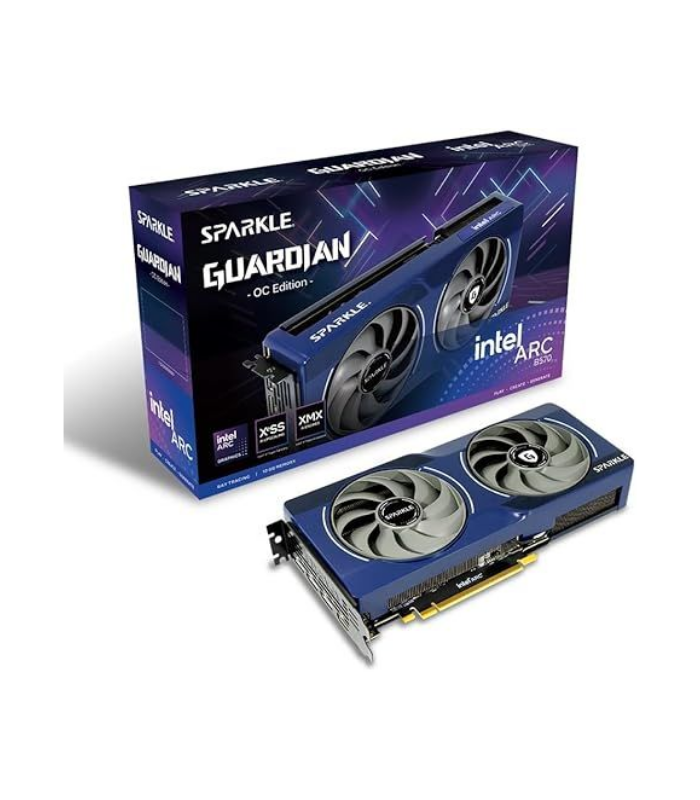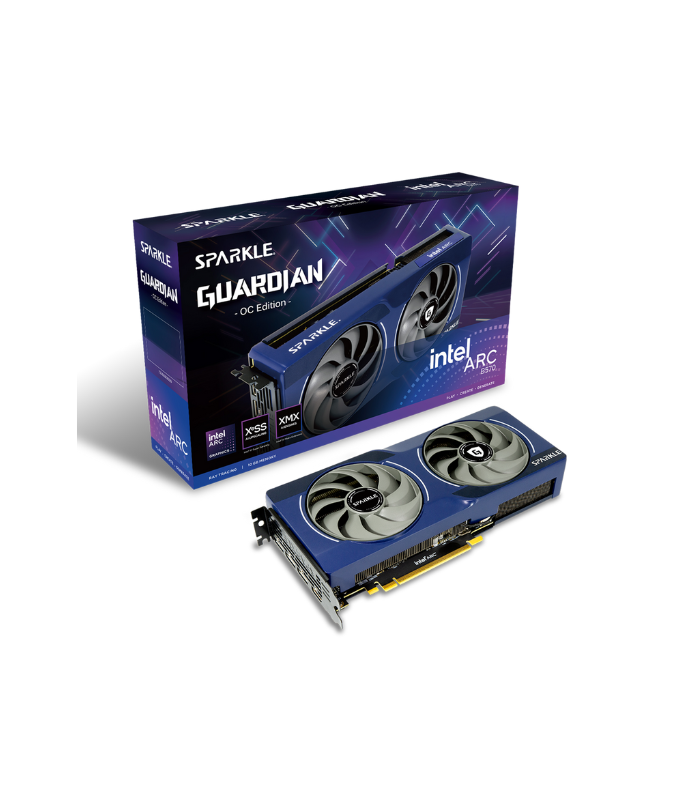SPARKLE
Sparkle Intel Arc B570 GUARDIAN OC 10GB GDDR6, 2660MHz, HDMI/3DP
-
GPU: Intel Arc B570 with 10GB GDDR6 memory.
-
Boost Clock: Up to 2660 MHz for high performance.
-
Outputs: 1 x HDMI 2.1 and 3 x DisplayPort 2.1.
-
Cooling: Dual AXL fans and metal backplate for effective heat dissipation.
-
TDP: 150W, recommended PSU of 600W or higher.
Sparkle Intel Arc B570 GUARDIAN Luna OC 10GB GDDR6, White, 2660MHz, HDMI/3DP
-
Memory: 10GB GDDR6, 2660MHz memory speed.
-
Graphics Engine: Powered by Intel Arc B570 GPU for high-performance gaming.
-
Display Ports: Includes HDMI and 3 DisplayPort outputs for versatile connectivity.
-
Cooling Design: Features a robust thermal solution for efficient heat dissipation.
-
OC (Overclocked): Factory overclocked for enhanced gaming performance.



